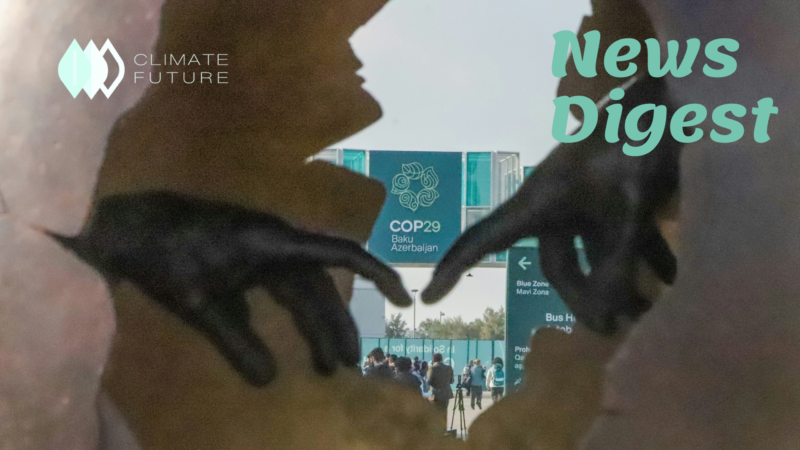Millions face flooding threat across west and central Africa
The temperatures in the Sahel, a region in North Africa, are rising 1.5 times faster than the global average. In Central Sahel countries, above average rains and flooding have killed hundreds, decimated over one million hectares of cropland and displaced thousands. Beyond the Sahel, South Sudan and Sudan are facing historic floods for a fourth consecutive year. The climate crisis is disrupting food security, destroying livelihoods and aggravating conflicts over driving displacement and scarce resources. Over 1.3 million people have been displaced in Nigeria so far and 2.8 million have been impacted by flooding with roads and farmlands submerged. UNHCR appealed to all donors for urgent support to help those most in need in Central and West Africa since its humanitarian operations are dangerously underfunded.
Climate change: CO2 and methane in our atmosphere reach record levels
The agency’s yearly Greenhouse Gas Bulletin warns that methane concentration in 2021 jumped as the biggest year-on-year since systematic measurements started in the last 40 years. The reason for the unprecedented increase seems to be a result of both biological and human-induced processes. The increase in carbon dioxide levels from 2020 to 2021 was bigger than the average annual growth rate over the last decade and the levels continue rising through 2022. To be more specific, CO2 concentrations reached 415.7 parts per million last year with methane 1908 parts per million and nitrous oxide 334.5 parts per million respectively. These values consist of 149%, 262% and 124% of the pre-industrial levels before human activities started disrupting the natural balance of the gasses in the atmosphere. WMO stated that as long as emissions go on, global temperature will continue to rise. WMO underscores that the emission from 2020 to 2021 was slightly higher than that experienced from 2019 to 2022 and higher than the average growth rate yearly over the past 10 years.
Step up investment to deliver safe drinking water to all
Although over two billion people have access to safe drinking water over the past two decades, a quarter of the world’s population still have to struggle. Climate change is increasing the intensity and frequency of floods and droughts by affecting water security and disrupting supply. Rapid urbanization is challenging the cities to deliver water to millions living in informal slums and communities. To tackle this issue, actionable recommendations for partners and governments aimed at raising funding for safer systems and strengthening capacity building to regulate and coordinate service provision. The partners have called for governments and the private sector to significantly increase political commitment to drinking water. It is important to strengthen existing institutions like establishing an effective regulatory environment, supported by standards and legislation for service quality and ensuring enforcement. Innovation and experimentation should be encouraged through supportive regulation and government policy.
Heatwaves to impact almost every child on earth by 2050: UNICEF report
Nowadays, at least half a billion youngsters are already exposed to a high number of heatwaves. By the middle of this century, it is estimated that over two billion children will be exposed to more frequent, more severe and longer lasting heat waves. According to the new data from the agency published in its report, young children face greater risks than adults when faced with extreme heat events. Protecting children from the escalating impacts of heatwaves has to be a priority for every country. Children in northern regions will encounter the most dramatic increases in high heatwave severity. By 2050, nearly half of all children in Asia and Africa will have to face sustained exposure to extreme high temperatures over 35C. Since almost every country is experiencing changing heatwaves, each government has to determine the survival of those who are least responsible for the crisis.



